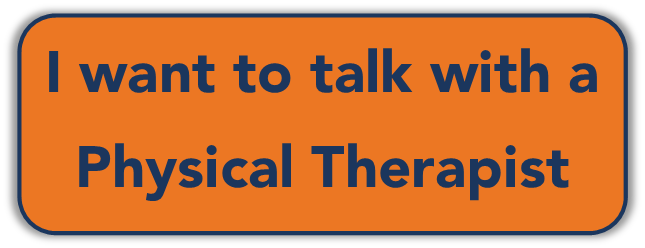To stand up and balance takes a coordinated act between your brain and body. Your balance system has to communicate with your muscles and bones to keep you from falling over. Your brain receives signals from various parts of your balance system telling you whether you are bent over or upright, whether a dog or a car has just run out in front of you, and whether you are on solid ground or walking over sand. It makes sense to talk about being strong enough to balance. If you have weak legs, or your pelvic floor is compromised, being able to stay upright is going to be an issue. Your legs hold you up. Your pelvic floor is the foundation of your core, it is the center of your movement. When these are not strong enough to support your body weight, there is no way you are going to stand on your own, let alone be coordinated enough to walk or run.
Your body is what allowed you to dance at your wedding, it’s what gave you the ability to birth your children, it’s what keeps you wanting your independence, but it's also not alone. So, what if your legs and pelvic floor are strong? What if you can keep yourself upright, but you still have difficulty when walking or moving? In this case, the three sensory components of your balance center need to be considered.
Schedule a Free Consultation today.
Where is Balance in The Brain?
Because your body works as a coordinated system, everything has to come back to your relay center, your Brain! Balance is no different. To balance, you have to rely on the careful coordination of sensory input from your eyes, ears, and feet. Specifically, you have to rely on your vision, vestibular, and somatosensory systems working together to detect and respond to the information at hand. The information goes to a few places in the brain, but your cerebellum is the core where all the information is combined. Your cerebellum receives all of the information and then sends out signals back to the rest of your body to respond to the changing feedback. This is occurring so quickly that you are not even aware of it.
When this feedback is impacted (for example, when you ride on a boat, when you have vertigo, or when your balance system hasn’t been challenged enough), you risk becoming off balance and whenever you are imbalanced you are at a greater risk for a fall. When your balance is off several things can occur including a feeling of nausea, an inability to move, and falling. When it comes to falling, the dangers are momentous. An older adult dies from a fall every 19 minutes, and a fall leads to an older adult being treated for an injury in the emergency room every 20 seconds. Unfortunately, if the initial fall doesn’t lead to death, a resulting hip fracture could.
How does the Balance System Work?
Your balance system is a series of inputs from several sensory systems, located throughout the body, that relay information back to the cerebellum to coordinate movement and respond to changes in your environment (like your foot slipping on ice, or seeing a step in front of you). The visual, vestibular, and somatosensory systems all provide unique information that combines to alert your body as to whether or not it is moving.
What is Your Balance System?
Now that you know that your balance is made up of your Visual, Vestibular, and Somatosensory systems, let's take a closer look at how each of these help in keeping your balance and in preventing falls.
- Vision System: Of your three sensory inputs for your balance system, you are probably most familiar with your eyes. They are such an integral part of your everyday life that when they are not working properly, you know it. You cannot see a step in front of you, you may have difficulty responding to objects shifting around, and you may become disoriented when you are moving (such as riding in a car or on a boat) as the world around you stays still. Your vision system is primarily responsible for what you would think… identifying objects that may be hazardous. It is a whole lot better, whether or not you have good balance, to note objects that may be in your way or that may cause you to tumble and avoid them. Avoiding objects and situations that may cause you trouble is oftentimes the first sensory input people respond to. As we age, our vision can be impacted by things like macular degeneration or cataracts. These natural occurrences make seeing that much harder. In this case, the physical therapist designing your fall prevention program will need to coordinate care with your physician and focus on your other two sensory inputs.
- Vestibular System: the inner part of your ear. Your vestibular system is made up of a series of three semi-circles, your semicircular canals. These semicircular canals are oriented such that they can pick up on motion in all planes of a 3-dimensional world. The inside of the semicircular canals is lined with hair cells and they are filled with fluid. When these hair cells move they are directly linked to the brain through nerve cells and the movement of these hair cells is what tells your body that it is in motion or at rest. Vertigo, including BPPV, is a dysfunction of your vestibular system that occurs because tiny calcium crystals break off from your otolith, which also aids in identifying that your body is moving. As these crystals float throughout the fluid and touch the hair cells, they are sending a false positive for movement to your brain. Meaning that your brain senses movement but your sensory input from your visual and somatosensory systems do not match. Your vestibular system is key in detecting and ultimately fighting falls as part of a falls prevention program.
- Somatosensory System: primarily responsible for the sensation of touch. As it pertains to your balance system, your sense of touch is coming through the sensation of your feet contacting the ground and with the movement of your muscles and joints. When you move across unstable surfaces (as during the winter on the ice, or the summer in sand), your somatosensory system is less able to adapt to the dramatic changes and it forces you to use your vision and your vestibular systems to keep you from falling. There any many ways the somatosensory system can become impaired, but one of the more common is through diabetic peripheral neuropathy. With neuropathy, you have pain and limited sensation in your feet, which again forces you to rely more heavily on your visual and vestibular systems.
Much like your muscles, when the components of your balance system do not get exercised, they become weaker. Seeking out a physical therapist who focuses on Balance Rehabilitation and falls prevention programs, will get you to a provider who can help prevent you from falling. They will be able to challenge you safely across real-life and simulated situations to strengthen the individual components of your balance system.
Isn’t it time you called your Oklahoma City Physical Therapists to see what FYZICAL can do for you? CALL FYZICAL
Can We Prevent Falls in the Elderly?
When developing a falls prevention program, you have to understand both the physical and sensory component of your balance system. While nothing is guaranteed, there are ways to improve your balance and prevent falls in the elderly. Strength training and stretching are a part of any good fall prevention program, but so should re-training the brain to re-weight the sensory feedback provided by the three sensory inputs of the balance center. When we understand the deficits occurring for an individual we need to provide targeted treatment (like from a physical therapist) to reduce the impact and improve your physical functioning.
You just need to get started with an evaluation, today!
What is Balance Therapy?
Balance therapy, or balance rehabilitation, is an area of physical therapy that focuses on improving your balance and preventing falls. It takes into account both your physical fitness and your sensory input to prescribe the best course of action to reduce your risk of falling. Physical strengthening overseen by a physical therapist is likely to be a major component of your rehabilitation. Your PT will want to make sure that you can walk upstairs, over unstable surfaces, and that a change in direction does not lead to your falling over.
Your sensory inputs each have their unique contributions. For example, your vision is less effective in low light situations such as walking through a parking lot after dinner or getting up in the middle of the night to use the restroom. When you cannot use your eyes, you have to rely on your vestibular and somatosensory systems. Unfortunately, when these are compromised, you cannot recruit them to help and you are at high risk of falling. If your somatosensory system is your main sensory mechanism for balance, when you end up on an unsteady surface you cannot rely on the feedback from your somatosensory system alone. If your visual and vestibular systems are compromised you are at great risk of falling.
As part of your Balance Therapy, your Falls Prevention Program will work to reduce the variation across your sensory systems so that you are not so heavily reliant on a single sensory input. We call this sensory re-weighting, which means that we will balance your three sensory inputs to try to have them working as equally as possible and avoid one dominating input leaving you at risk of falling when you cannot use it (e.g., losing your vision in low light). Only by assessing musculoskeletal and sensory deficits can your physical therapist know where best to go for treatment. A thorough evaluation of your balance deficits is the only way your physical therapist can create an effective, individualized fall prevention program that helps you love your life!
-FYZICAL Therapy & Balance Centers of Oklahoma City
FYZICAL Therapy & Balance Centers have developed a world-class balance rehabilitation program that can be tailored to each patient’s individual needs. As the only Level III balance rehabilitation program in Oklahoma City, the physical therapy provided for patients at FYZICAL Oklahoma City cannot be matched. Our Physical Therapists will conduct an evaluation using state-of-the-art balance assessment technology and provide safety and security throughout your treatment with our safety overhead system. If you are unsure about your balance, or you want to see the FYZICAL Difference for yourself, schedule a free consultation today.


